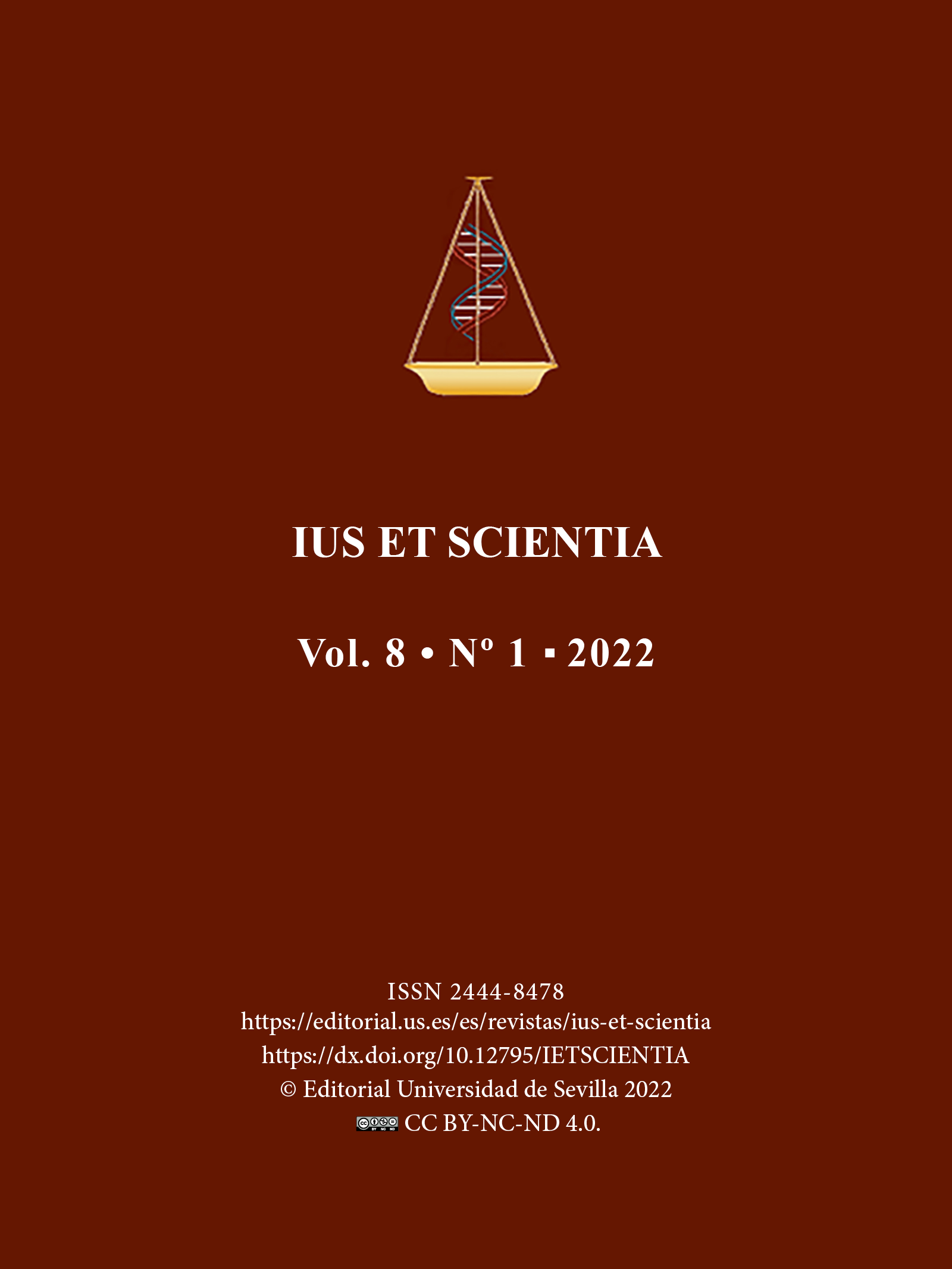Is the regulatory development of the athlete’s biological passport necessary in spanish law? Between the punishment of sisyphus and the fable of the two frogs
DOI:
https://doi.org/10.12795/IETSCIENTIA.2022.i01.06Keywords:
Athlete Biological Passport, Expertise, Means of testing, Doping, Regulatory development, World Anti-Doping CodeAbstract
Much controversy has always accompanied the application of the Biological Passport and with it, the misgivings of athletes, representatives of sports institutions and, of course, of operators and legal actors. The controversy that spread in the beginning from the very reliability of this tool to even its constitutional fit and its possible contradiction with fundamental rights of the athlete have been appeased over time, with the generalization of its use around the world and especially in countries that allocate more resources to public policies for the promotion, protection and development of sporting activity. In our country, however, there are still sometimes critical voices that are wary of the use of this means of proof, and in recent times and in relation to the new anti-doping legislation that will have to adapt our legal system to international standards, the need to legalize the procedures and protocols for the elaboration of the Athlete’s Biological Passport has been questioned. This article aims to unravel the true nature and essence of this means of proof and the difficulties and contradictions that its eventual regulatory development would have to face.
Downloads
References
Álvarez, J., Manonelles, P., Oliete, E., Murillo, V., & Nuviala, A. (2020). Conocimientos, actitudes, creencias de los jóvenes españoles en materia de dopaje (No. ART-2020-121574).
Barroso, O. (2020). La Lucha contra el Dopaje en el Deporte: la Lista de Prohibiciones, los Laboratorios Anti-dopaje y los Programas de Investigación Científica de la AMA. Revista Cubana de Medicina del Deporte y la Cultura Física, 7(2).
Ferrer, R. M., Triviño, J. L. P., Díaz, M., Conlledo, G., Guzmán, S. I. V., García, J. R.,... & del Blanco, G. P. (2018). Dopaje deportivo y código mundial antidopaje. Editorial Reus.
González, A. G. (2021). Dopaje deportivo. El pasaporte biológico del atleta. In Tratado de derecho deportivo (pp. 331-349). Aranzadi Thomson Reuters.
José, M. (2014). Fernández Farreres, Germán: Sistema de Derecho Administrativo. Revista de Administración Pública, (193).
Marín, T. V. (2013). Técnica legislativa, inserción de la norma en el ordenamiento jurídico y Tribunal Constitucional. Teoría y realidad constitucional, (31), 323-350.
Martínez Córdova I.R, A. (2020). La dactiloscopia como herramienta forense relevante en la resolución de problemas médico-legales y criminales. Universidad Técnica de Machala
Morales Asencio, J. M., Gonzalo Jiménez, E., Martín Santos, F. J., & Morilla Herrera, J. C. (2008). Salud pública basada en la evidencia: recursos sobre la efectividad de intervenciones en la comunidad. Revista española de salud pública, 82(1), 05-20.
Olaf Schumacher, Y., & d’ Onofrio, G. (2012). Scientific expertise and the Athlete Biological Passport: 3 years of experience. Clinical chemistry, 58(6), 979-985.
Oliva, V. M. C., Díaz, P. C., Jorge, Y. G., & Rivero, J. P. P. (2020). El pasaporte biológico del atleta como una herramienta eficaz en la lucha contra el dopaje. Revista Cubana de Medicina del Deporte y la Cultura Física, 11(1).
Prados Prados, S. (2013). Ley Orgánica 3/2013, de 20 de junio, de protección de la salud del deportista y lucha contra el dopaje en la actividad deportiva [boe n. º 148, de 21-VI-2013].
Robinson, N., Saugy, M., Vernec, A., & Sottas, P. E. (2011). The athlete biological passport: an effective tool in the fight against doping. Clinical chemistry, 57(6), 830-832.
Sottas, P. E., Robinson, N., Saugy, M., & Niggli, O. (2008). A forensic approach to the interpretation of blood doping markers. Law, Probability and Risk, 7(3), 191-210.
Sottas, P. E., Robinson, N., Giraud, S., Taroni, F., Kamber, M., Mangin, P., & Saugy, M. (2006). Statistical classification of abnormal blood profiles in athletes. The International Journal of Biostatistics, 2(1).
Sottas, P. E., Saudan, C., Schweizer, C., Baume, N., Mangin, P., & Saugy, M. (2008). From population-to subject-based limits of T/E ratio to detect testosterone abuse in elite sports. Forensic science international, 174(2-3), 166-172.
Published
How to Cite
Issue
Section
License
Copyright (c) 2022 AGUSTIN GONZALEZ GONZALEZ

This work is licensed under a Creative Commons Attribution-NonCommercial-ShareAlike 4.0 International License.
Those authors being published in this journal agree to the following terms:
- Authors retain their copyright and they will guarantee to the journal the right of first publication of their work, which will be simultaneously subject to license recognition by Creative Commons that allows others to share such work provided it is stated the author’s name and his first publishing in IUS ET SCIENTIA.
- Authors may take other non-exclusive distribution license agreements version of the published work (e.g. deposit in an institutional digital file or publish it in a monographic volume) provided it is stated the initial publication in this journal.
- It is allowed and encouraged that Author s disseminate their work via the Internet (e. g. institutional digital files or on their website) prior to and during the submission process, which can lead to interesting exchanges and to increase citation of the published work.
- Abstract 227
- PDF (Español (España)) 266
- HTML (Español (España)) 53





